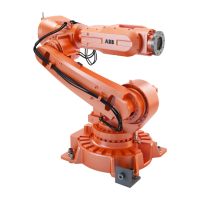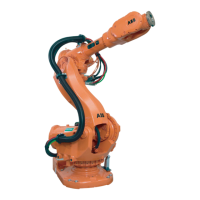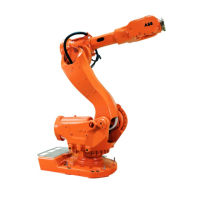Description
Product Specification S4Cplus M2000/BaseWare OS 4.0 21
External axes
Very flexible possibilities to configure external axes. Includes for instance high
performance coordination with robot movement and shared drive unit for several axes.
Big Inertia
One side effect of the dynamic model concept is that the system can handle very big
load inertias by automatically adapting the performance to a suitable level. For big,
flexible objects it is possible to optimise the servo tuning to minimise load oscillation.
Soft Servo
Any axis (also external) can be switched to soft servo mode, which means that it will
adopt a spring-like behaviour.
1.12 External Axes
The robot can control up to six external axes. These axes are programmed and moved
using the teach pendant in the same way as the robot’s axes.
The external axes can be grouped into mechanical units to facilitate, for example,
the handling of robot carriers, workpiece manipulators, etc.
The robot motion can be simultaneously coordinated with for example, a linear robot
carrier and a work piece positioner.
A mechanical unit can be activated or deactivated to make it safe when, for example,
manually changing a workpiece located on the unit. In order to reduce investment
costs, any axes that do not have to be active at the same time, can share the same drive
unit.
An external axis is an AC motor (IRB motor type or similar) controlled via a drive unit
mounted in the robot cabinet or in a separate enclosure. See Specification of Variants
and Options.
Resolver Connected directly to motor shaft
Transmitter type resolver
Voltage ratio 2:1 (rotor: stator)
Resolver supply 5.0 V/4 kHz
Absolute position is accomplished by battery-backed resolver revolution counters in
the serial measurement board (SMB). The SMB is located close to the motor(s)
according to Figure 10.
For more information on how to install an external axis, see the User’s Guide - External
Axes.
External axes for robot types IRB 4400 and IRB 6400X:
When more than one external axis is used, the drive units for external axis 2 and
upwards must be located in a separate cabinet as shown in Figure 10.

